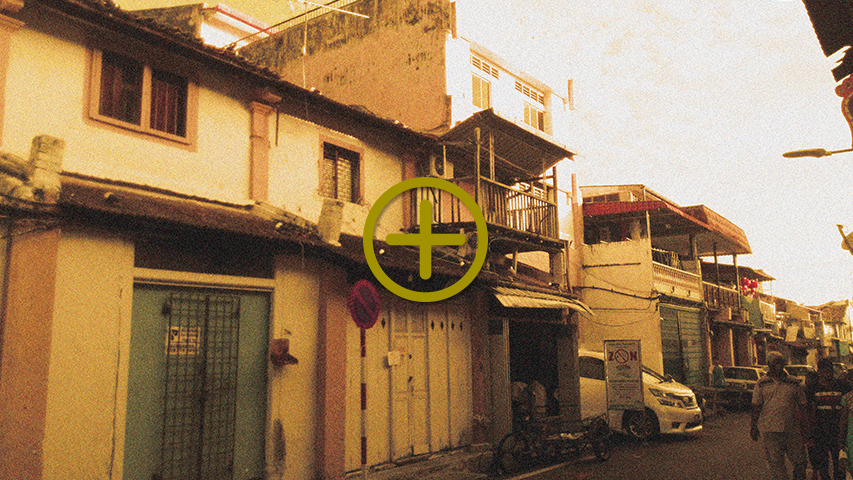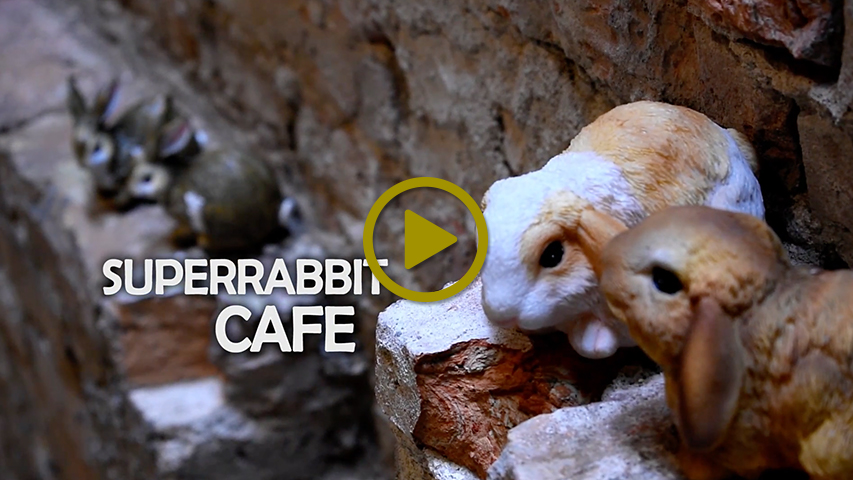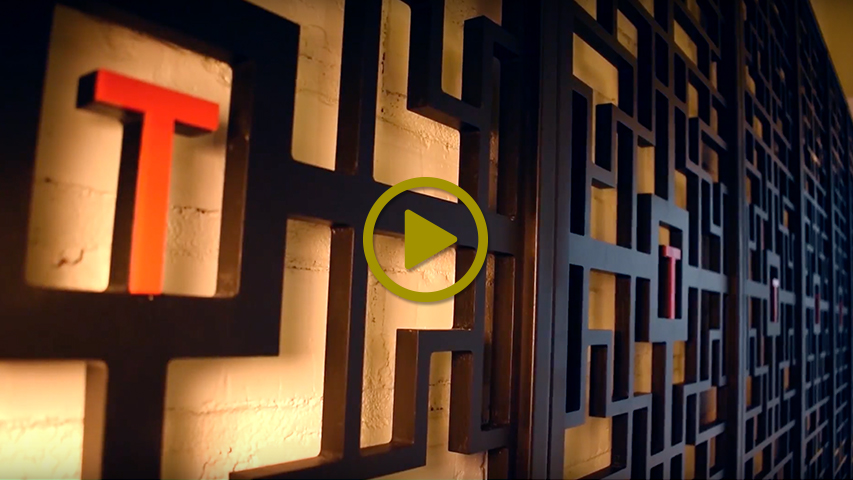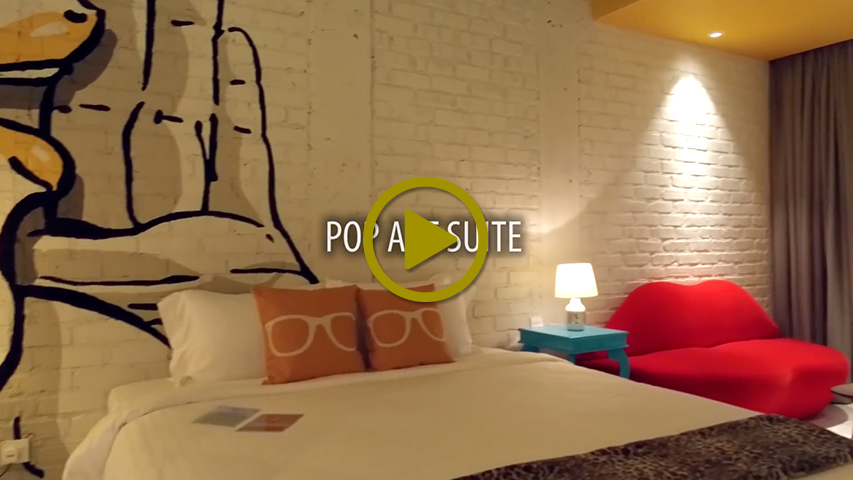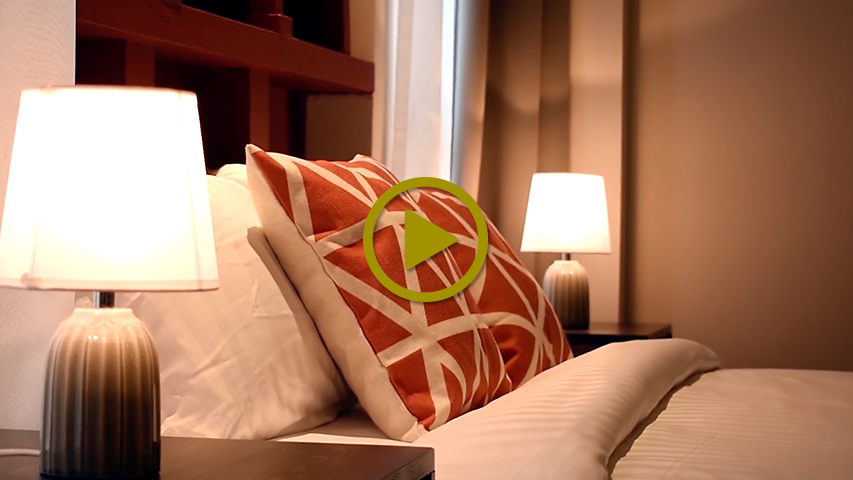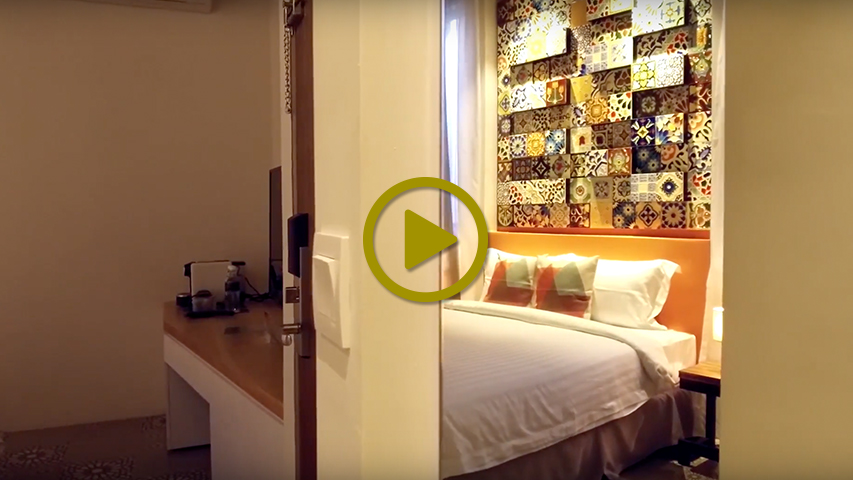HOW TIMEZ BEGAN
Like much of the architecture found in Melaka’s Jonker Street, the building that now houses Timez Hotel has been standing for decades, blending seamlessly into the locale with its non-descript form. Its transformation has been nothing short of remarkable, one that involved careful and detailed planning, and drew on the expertise of local architects and designers who are familiar with the preservation of Melaka’s built heritage.
EXTERIOR & LOBBY
Tucked in a row of shophouses, Timez Hotel stands out with its chic, minimalist outlook. Long wooden shutters that characterise much of Melaka's pre-war buildings are set against a monochromatic facade to spell out the hotel’s modern heritage concept. Leading to the entrance is a landscaped walkway, a mini oasis designed to be a breathing space amidst the bustle of Jonker Street. Step in for an authentic experience that is unique to Melaka.
SUPERRABBIT CAFÉ
Timez Hotel Melaka's SuperRabbit Cafe presents a menu that was inspired by flavours that define local cuisine, updated with an international taste profile that will appeal to all travellers. Open to both staying and walk-in guests, this casual all-day dining outlet is ideal for all styles of gatherings, from breakfast meetings to lunch catch-ups, coffee-and-cake breaks to intimate dinners for two. The cosy space is just as ideal for private events, and celebratory and corporate functions. Whether you just want a light nibble or a substantial meal, SuperRabbit Cafe’s selections will have you hopping with delight.
HOTEL OVERVIEW
Tucked in a row of shophouses, Timez stands out with its chic, minimalist outlook. Long wooden shutters that characterise much of Melaka’s pre-war buildings are set against a monochromatic facade to spell out the hotel’s modern heritage concept. Leading to the entrance is a landscaped walkway, a mini oasis designed to be a breathing space amidst the bustle of Jonker Street. Step in for an authentic experience that is unique to Melaka.
CHINESE CONCEPT ROOMS
The earliest recorded arrival of the Chinese in Melaka was in 1405, led by Admiral Cheng Ho. Since then, their presence has been woven into the local fabric, their unique culture largely maintained and partly assimilated. The Chinese continue to practise many traditions the way their ancestors did, contributing to the fusion of inheritance that makes Melaka what it is today.
PERANAKAN CONCEPT ROOMS
While preserving their way of life, the Chinese also welcomed local Malay customs into their fold and birthed an inimitable subculture known as the Peranakans. The men and women, known as Babas and Nyonyas respectively, epitomised the seamless integration of two cultures in their customs, costumes, cuisine, language and arts. The Nyonyas’ baju panjang, for example, was adapted from the Malay baju kurung; Peranakan dishes are recognisably Chinese but flavoured with spices typical of Malay cuisine; their patois is a delightful harmony of the Hokkien dialect with Malay phrases.
BRITISH CONCEPT ROOMS
The Dutch made their exit from Melaka when British troops came marching in after the Angle-Dutch Treaty of 1824 was signed. As they did throughout the rest of Malaya, the British set up systems, established administrative processes and erected buildings in their vernacular architecture. Many of those whitewashed colonial structures remain throughout the country, as have various legacies including language and an interesting hybrid of Hainanese-English food served at the kopitiam (coffee shop).
DUTCH CONCEPT ROOMS
The Portuguese’ reign in Melaka ended with the arrival of the Dutch in 1641, and they remained in power for more than 180 years. It was a relatively uneventful period and like the Portuguese before them, the Dutch also bequeathed a built heritage on Melaka. The Dutch Square is their best legacy, a complex of buildings sporting bold terracotta red facades that now house museums, a church and a clock tower.
PORTUGUESE CONCEPT ROOMS
Melaka’s strategic position as a port and trading hub in the 16th century attracted the attention of foreign powers, the Portuguese among them. They conquered Melaka in 1511 and went on to rule for 130 years, leaving behind important landmarks such as the A’Famosa and the Kristang ethnic group, a result of marriage with locals. A small Portuguese village in Melaka’s Ujong Pasir continues to upkeep traditions, including festivals such as Fiesta San Pedro.

